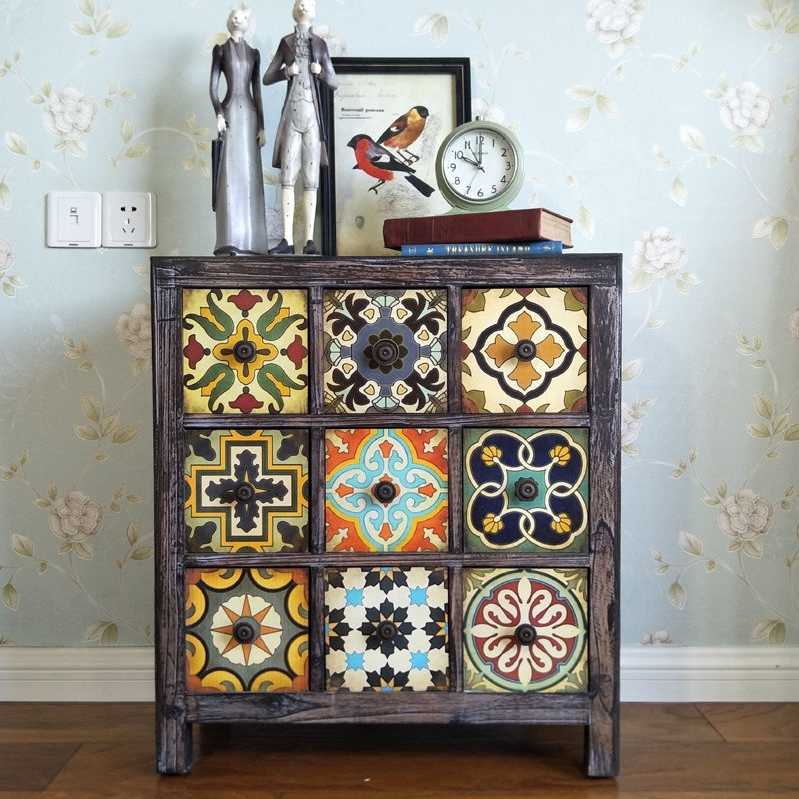Ink limit
The Total Ink Limit (TIL) is also located under File>Color Settings>CMYK Setup and is another important parameter to consider. Improper handling may result in moire. You must try to control the total amount of ink between 340-380%. That is, if you can't pull down the Lc and Lm curves, you will increase the amount of ink by 200% in the dark tone area, resulting in a 500% unimaginable amount of ink in the screen separation. By specifying a lower total amount of ink, not only can the color reproduction ability be improved, but also the amount of ink can be reduced and the cost can be saved.
Dot expansion
To prevent dot gains, additional channels must be manually adjusted (in the CMYK Setup window) and each channel be individually adjusted. The reasons for this adjustment are twofold. First, the color value of the light color ink is greatly reduced, and the effect of dot gain on the high tone and 25% tone area is not significant. Second, the probability of dot gain occurring in this part of the image is very small.
When printing, you must carefully observe the difference between the printed image and the original image. If further corrections are required, you can brighten or darken (reduce or increase the printing density of the ink), or return to the processing stage and adjust each time. The color values ​​of the color channels make them brighter or darker. Experience is the best guide, so the first few images in six-color printing have the most experience. For users who are printing six colors for the first time, it is best to record each change carefully.
Number of lines
The advantage of using a two-tone process printing is that the number of halftone screen lines can be reduced without significant loss of resolution. This facilitates the work of the two methods. First, if the number of screen lines is reduced (using larger dots), dot gain and tone reproduction are controlled, and virtual halo is also easy to control. Moire is also not obvious. This makes the entire image easier to control and better consistent.
On the other hand, if the number of screen lines remains at the usual level, the appearance with increased resolution will be seen. The details will be rich, and the visual half-tone rose pattern will be reduced. This is very important for POP. Because the halftone pattern in the POP can reduce the quality of the image.
The adjustment of the number of lines is the same as the halftone screen adjustment discussed in the next paragraph, which is modified in the "Page Setup" window (File>Page Setup>Screen).
Separation net angle
For the six-color printing mode, the control of the web angle is relatively easy. When the cyan and magenta channels are separated, they effectively become dual-color channels. This means that when the Lc halftone dot is mixed with standard cyan ink, the minimum angle between every two colors must be kept at 30°.
Typically, the cyan and magenta halftone screen angles differ by 60° (eg, 15° and 75° or similar values). With this in mind, make a simple transition to the web corner. Lc is printed at a 15° screen angle and standard Cyan is printed at 75°. Lm is printed at 75° and standard magenta is printed at 15°. Now look at the 60° difference between Lc and Lm, and the difference between standard cyan and magenta is 60°. Both conditions can be satisfied, and any color will not conflict with other colors.
Also remember to rotate all the corners away from the 0°, 45°, and 90° corners of the traditional lithographic screen. These angle conflicts can create serious moiré patterns. One of the most common rotation angles is to increase 7.5° to avoid the corners that cause conflicts. For example, if the lithographic screen angles are 0°, 15°, 45°, and 75°, the rotated screen angles are set to 7.5°, 22.5°, 52.5°, and 82.5°.
Proofing
For a multi-channel color separation process, proofing becomes a weak link. No analog proofing system (Matchprint, Waterproof, etc.) gives a better preview. Several digital proofing programs will enter the market, but now the only proofing method that can be used is proof printing, which is expensive and time-consuming.
(to be continued)
Dressers have many different styles and functionalities. However, the most popular are all dressers, chest dressers, media chest dressers, and dressers with mirrors. All dressers and chest dressers are the most traditional type of this furniture and provides an ample amount of space to store your clothes and belongings.

On the other hand, if you are looking to maximize the available space in your room, media chest dressers and dressers with mirrors will provide additional storage. Media chest dressers are designed to provide plenty of space for a TV on top and may include a cubby area that can hold your cable box or other device. If you choose one with this feature, they also include a hole in the back to allow wiring to easily connect to your wall. In order to prevent tipping, we recommend that the dimension of the TV should not exceed the width of the dresser.
Chest Of Drawers,Wooden Chest Of Drawers,Mirrored Chest Of Drawers,Solid Wood Chest Of Drawers
Jinan Tri-Tiger Technology Development Co., Ltd , https://www.jinanfurniture.com